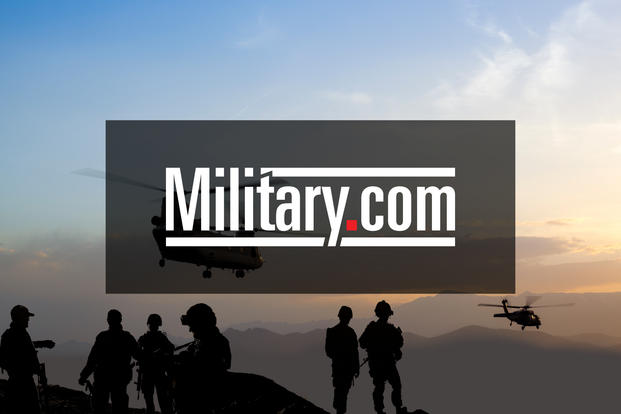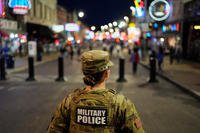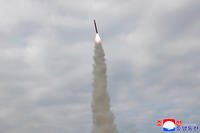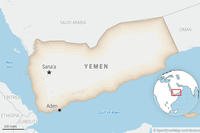Editor's Note: This story has been updated with a statement from Pentagon officials.
Turkish cross-border artillery fire hit a northern Syria town where a U.S. Special Forces unit was operating as fighting escalated between the invading Turkish military and the U.S.-backed Syrian Democratic Forces, as first reported by Newsweek Friday.
The shelling took place in the mostly-Kurdish town of Kobane, west of the Euphrates River and about 45 miles from the scene of the ground incursion in northeastern Syria,
In a statement, a Pentagon official confirmed that the Turkish military had shelled within "a few hundred meters" of U.S. troops.
"U.S. troops in the vicinity of Kobani came under artillery fire from Turkish positions at approximately 9 p.m. local Oct. 11," Navy Capt. Brook DeWalt, director of Defense Press Operations, said in a statement to Military.com. "The explosion occurred within a few hundred meters of a location outside the Security Mechanism zone and in an area known by the Turks to have U.S. forces present."
All American troops had been accounted for, and there were no injuries, he said; U.S. forces, he added, have not withdrawn from the region.
All U.S. troops are accounted for with no injuries.
"The United States remains opposed to the Turkish military move into Syria and especially objects to Turkish operations outside the Security Mechanism zone and in areas where the Turks know U.S. forces are present," he said. "The U.S. demands that Turkey avoid actions that could result in immediate defensive action."
It was not immediately clear how close the shelling came to the U.S. troops in the mostly-Kurdish town of Kobane, also called Kobani, west of the Euphrates River and about 45 miles from the scene of the ground incursion in northeastern Syria, the Newsweek report said, citing a Pentagon official and an Iraqi Kurdish intelligence source.
There were no immediate reports of casualties.
In a statement released by the Turkish government Friday afternoon, officials said there had been no intentional targeting of a U.S. observation point, but that Turkish troops had fired in self-defense on "terrorist" positions in the hills about 1,000 meters south of the American position.
"Before the shooting, all kinds of precautions were taken to prevent damage to the U.S base," a translated version of the statement read. "As a result of the transmission of the issue to us by the United States, the fires ceased. There is absolutely no shooting of the U.S. and the Coalition."
Although U.S. troops have been withdrawn from northeastern Syria, new Joint Chiefs Chairman Gen. Mark Milley said Friday that the Turkish military had been given the exact locations of all U.S. forces in Syria and added that they have "the right to defend themselves."
The Turkish military has "grid coordinate detail of the location of U.S. forces" throughout Syria.
"They know exactly where U.S. forces are," Milley said at a joint Pentagon news conference with Defense Secretary Mark Esper.
He added that "we retain the right to self-defense -- that's clear and unambiguous."
Later at the Pentagon, a U.S. official told several news outlets that the source of the shelling in Kobane had not yet been confirmed.
At the Pentagon news conference, Milley and Esper said that Turkey's "Operation Peace Spring" was initially focused on two northeastern Syrian towns east of the Euphrates -- Tal Abyad and Ras al-Ayn -- from which a total of about 50 U.S. troops had been withdrawn on order of President Donald Trump.
The withdrawal drew harsh criticism from Trump's closest Republican allies in Congress, who said that the action amounted to a betrayal of the mostly-Kurdish Syrian Democratic Forces, which partnered with the U.S. in driving ISIS from its last territorial strongholds in Syria.
In an interview earlier Friday with Military.com, former Defense Secretary Ash Carter said that the withdrawal risked squandering the gains made against the Islamic State.
Partnering with the Iraqi Security Forces in Iraq, and the SDF in Syria, in the long battle against ISIS "achieved the necessary victory, and now [the Trump administrating is] surrendering it," Carter said.
In the third day of the Turkish invasion, Milley said the Turkish offensive was "relatively limited in terms of ground forces." The operation included airstrikes by fixed and unmanned aircraft, artillery, and "some direct fire by tanks" in positions across the border, Milley said.
He estimated that a mix of about 1,000 Turkish troops and irregulars of the "Syrian National Army," formerly known as the Free Syrian Army, had crossed the border.
Some SDF units outside the immediate invasion area were moving north to counter the offensive, Milley said, but he stressed that the joint fight against ISIS remnants by the U.S. and the SDF was continuing. He also said that the SDF still maintained control of camps holding thousands of ISIS prisoners.
"We are opposed" and "are greatly disappointed" by the Turkish invasion, which "puts our SDF partners in harm's way," Esper said at the news conference.
He added that "we are not abandoning" the U.S. partnership with the SDF despite the "impulsive action" by Turkey.
In 2015, Kobane was the scene of what was hailed by the U.S. as possibly the first victory against ISIS following the swift march by Islamic State fighters across Syria and Iraq that brought them to the gates of Baghdad.
A fierce defense by Kurdish fighters in Kobane, backed by U.S. air support, threw back repeated attempts by ISIS to take the town.
-- Hope Hodge Seck contributed to this report.
-- Richard Sisk can be reached at Richard.Sisk@Military.com.















